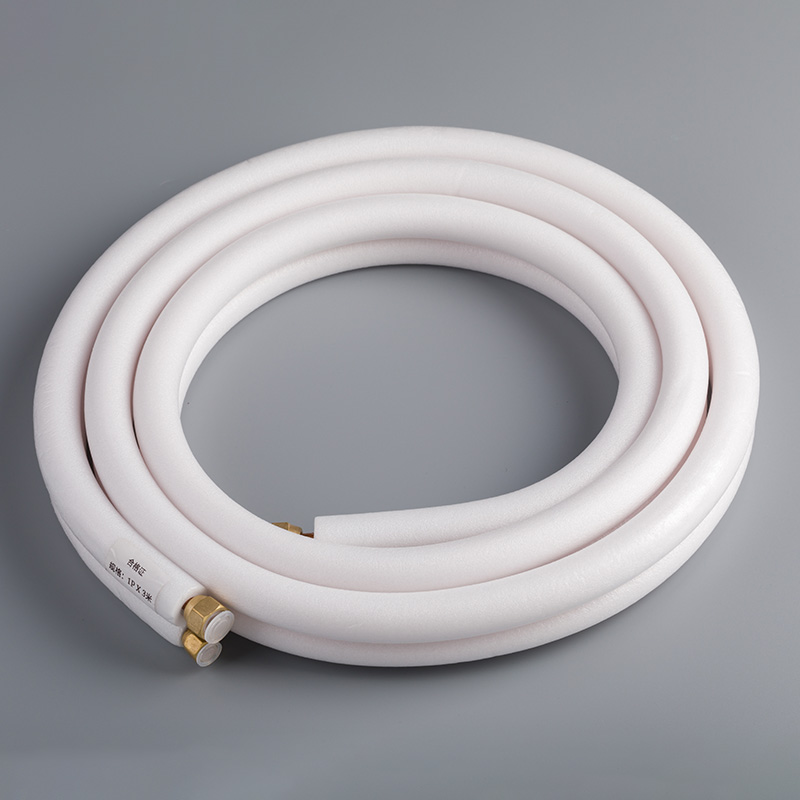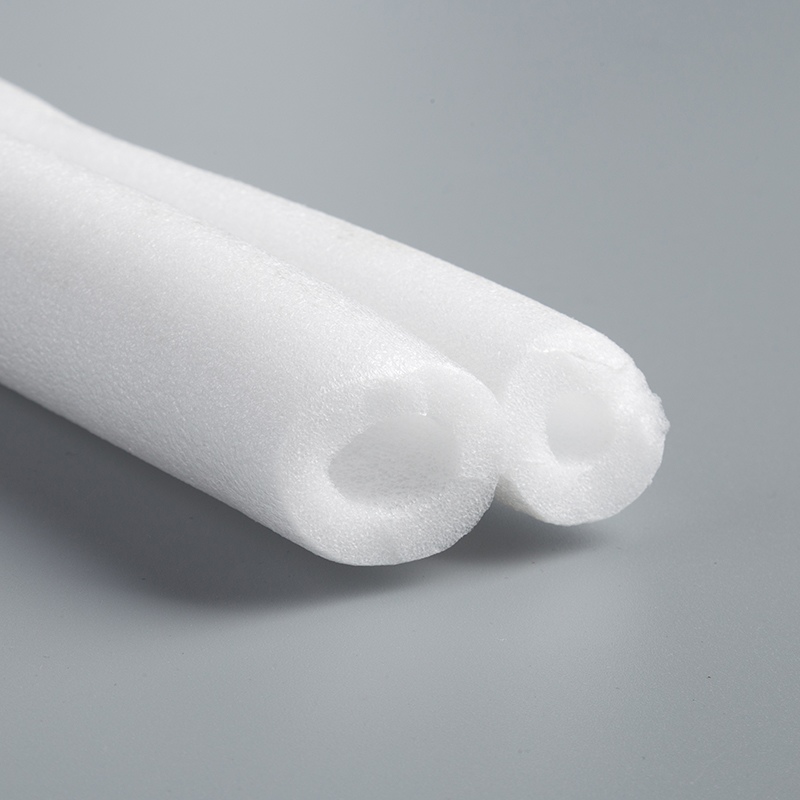How to Measure the Maximum Length of Copper Pipes for Air Conditioners

Knowing the maximum length of copper pipes is important, especially when considering how long can air conditioner copper pipe be. It helps your air conditioner work well and save energy. Long pipes can make cooling less effective and cost more. Always check the manufacturer’s guidelines to prevent problems. Measure carefully and think about your system’s needs. This keeps your air conditioner working better and lasting longer.
Key Takeaways
Always check the maker's rules for copper pipe lengths. This helps your air conditioner work well and last longer.
Measure the space between indoor and outdoor units carefully. Shorter pipes make refrigerant flow better and avoid cooling problems.
Count bends and fittings when measuring pipes. Bends add length and can change refrigerant flow, so plan the pipe path wisely.
Pick the right insulation type and thickness for pipes. Good insulation stops energy loss and keeps moisture away.
Ask an HVAC expert if pipes need to be longer than allowed. They can adjust refrigerant levels and keep the system working properly.
How Long Can Air Conditioner Copper Pipe Be?
Why following manufacturer guidelines matters
Sticking to manufacturer rules for copper pipe lengths is crucial. It helps your air conditioner work well and last longer. Manufacturers set these rules to ensure smooth refrigerant flow and good cooling. Ignoring them can cause problems like:
Old pipes might have dirt that harms new air conditioners.
Pipes that are too big or small can upset the system.
Using the right pipe length stops leaks and keeps the compressor safe.
When installing a new system, replace old pipes. This avoids dirt and ensures everything works together. Following these tips keeps your air conditioner efficient and extends its life.
Usual maximum lengths for different air conditioners
The maximum copper pipe length depends on the air conditioner type. Manufacturers list these limits in their manuals. For instance, split systems often allow up to 80 feet of pipe. But for longer setups, you might need bigger pipes, oil traps, or solenoid valves.
Here’s a simple guide:
Maximum Pipe Length | Extra Needs |
|---|---|
80 feet | Bigger pipes, oil traps, solenoid valves |
Always check the manual when planning your setup. This ensures your system works as it should.
Problems with going over recommended pipe length
Using copper pipes longer than suggested can hurt your air conditioner. Long pipes may cause refrigerant flow issues and lower cooling power. The compressor might also struggle to stay lubricated, leading to damage.
This table shows how pipe length affects performance:
Pipe Length (ft) | Impact on Performance |
|---|---|
15 | Small impact |
60 | Noticeable change |
200 | Big problems |
Other issues include:
Refrigerant Flow: Long pipes can mess up the flow, causing uneven cooling.
Compressor Lubrication: Long pipes might block oil return, causing wear.
To avoid these issues, measure carefully and follow the limits. This keeps your air conditioner running well and lasting longer.
Understanding the System Layout

Finding spots for indoor and outdoor units
To install your air conditioner, decide where the units go. The indoor unit is placed inside, usually in the center of the space. This helps cool the area evenly. The outdoor unit is set outside, often on a flat surface like the ground or roof. It needs good airflow to work well.
Think about the building's HVAC plan when choosing spots. This plan shows important parts like water pipes, boilers, pumps, and air ducts. It helps you see how everything connects. For example, local HVAC systems stay in one area and don’t need ducts. Central HVAC systems use ducts to send air to different areas.
Here’s a simple table of common HVAC tools and their jobs:
Equipment Type | What It Does |
|---|---|
Mixing Box | Mixes air from different places. |
Dehumidification Unit | Removes water from the air for comfort. |
Air Handling Unit | Moves and conditions air in the building. |
Cooling Coil Unit | Cools air as it flows through. |
Exhaust | Pushes out old, stale air. |
Planning the route for copper pipes with bends and fittings
After picking unit spots, plan the copper pipe route. Measure the distance between the indoor and outdoor units. Then, draw the path the pipes will follow. Include bends, fittings, or obstacles in your plan. For instance, pipes might need to go around walls or through ceilings.
Use an air return system to improve airflow and clean the air. Add filters and exhaust outlets to keep the air fresh. Plan carefully so pipes aren’t too long or short. This helps the air conditioner work better. Try to make the route straight with few bends to keep refrigerant flowing smoothly.
Tip: Wrap the pipes with insulation to stop energy loss and water drops. This simple step boosts efficiency and performance.
Measuring Distances Accurately
Measuring horizontal and vertical distances between units
Find where the indoor and outdoor units will go. Use a measuring tape to check the horizontal distance between them. Keep the tape straight and level for correct measurements. If the units are on different floors, measure the vertical distance too. A laser meter or plumb line works best for height measurements.
Choose the shortest path for the copper pipes. Shorter pipes help refrigerant flow better and avoid problems. If you ask how long can air conditioner copper pipe be, shorter is usually better.
Tip: Write down each measurement. This avoids errors when planning the pipe route.
Accounting for additional length for bends and fittings
Copper pipes don’t always go in straight lines. You need to include bends, fittings, and obstacles like walls or beams. Each bend adds extra pipe length. Use a flexible tape to measure around bends and add this to your total.
For fittings, count the length of connectors or joints. For example, elbow fittings add extra length. Measure these carefully to avoid underestimating the total pipe length.
Note: Don’t make sharp bends in the pipe. Sharp bends can block refrigerant flow and lower efficiency.
By measuring carefully and including bends and fittings, you’ll get the right pipe length. This keeps the system working well and protects the compressor from strain.
Reviewing Manufacturer Specifications
Finding the air conditioner’s manual or technical guide
The first step is finding your air conditioner’s manual. This guide helps with setup and care. You can find it in the box or on the company’s website. If it’s lost, check the unit’s label for the model number. Use this number to search for the manual online.
Different manuals have different purposes. Some help with load calculations, while others focus on picking equipment or designing ducts. Here’s a simple table of common manuals and their uses:
Manual | What It Helps With |
|---|---|
Manual J | Figures out heating and cooling needs for homes. |
Manual S | Helps pick the right HVAC equipment. |
Manual D | Gives tips for planning duct systems. |
Manual T | Explains how to spread air evenly in rooms. |
These manuals help you follow the right steps for your system. Always check them before deciding on pipe length or other details.
Tip: Save a digital copy of the manual. It’s handy for setup or repairs.
Knowing refrigerant limits and pipe length rules
Refrigerant limits and pipe length rules are very important. Refrigerant is the cooling liquid your system needs to work well. Manufacturers set limits to keep the system safe and efficient.
Pipe length rules are also key. Longer pipes need more refrigerant, which might overload the system. This can cause poor cooling, higher energy bills, or damage to the compressor. Look in the manual for the maximum pipe length and refrigerant amount.
For instance, if the manual says 80 feet is the limit, don’t go over it. Longer pipes can mess up refrigerant flow, causing uneven cooling or compressor strain. Measure carefully and stay within the limits.
Note: If longer pipes are needed, ask an expert to adjust the refrigerant and keep the system working right.
By following these rules, your air conditioner will work better and last longer.
Considering Technical Factors
How pipe size affects refrigerant flow
The size of copper pipes is very important. It controls how refrigerant moves in your air conditioner. Picking the right size helps cooling and avoids system strain. Smaller pipes are cheaper and transfer heat better. But, they can make refrigerant move too fast, causing pressure problems.
Key points about pipe size and refrigerant flow:
Smaller pipes improve heat transfer and system performance.
Special tools like CFD check if pipe size fits the system.
Smaller pipes have less volume but more surface area, making them efficient.
Always check the manufacturer’s guide for pipe sizes. This keeps your system working well.
What pressure drop means for performance
Pressure drop happens when refrigerant loses pressure in the pipes. Too much pressure drop lowers cooling and stresses the compressor. Pipe size, length, and bends all affect pressure drop.
Here’s how these factors impact refrigerant flow:
Key Factors | What It Means |
|---|---|
Proper Oil Return | Keeps oil moving back to the compressor as needed. |
Correct Mass Flow | Matches refrigerant flow to the system’s design for best results. |
Minimized Pressure Drop | Reduces pressure loss to improve cooling and ease compressor work. |
Impact of Pipe Diameter | Smaller pipes cause bigger pressure drops and faster refrigerant flow, which can hurt efficiency. |
To lower pressure drops, keep pipes short and straight. This saves energy and keeps refrigerant flowing smoothly.
Why oil return is important for the compressor
Oil return keeps the compressor working well by staying lubricated. Without it, the compressor can overheat or break. The way pipes are set up affects oil return.
Tips for proper oil return:
Use the right pipe size to keep oil moving with refrigerant.
Choose pipe sizes based on refrigerant type, temperature, and pipe length.
Avoid pipes that are too small, as they block oil flow and harm the compressor.
Compressors need oil to avoid damage and last longer. Following these tips protects the compressor and keeps your air conditioner running efficiently.
Considering the refrigerant type in your air conditioner
The kind of refrigerant in your system affects pipe length. Each refrigerant has special traits that change how it moves. Knowing these traits helps you plan pipes for better cooling.
Different refrigerants need different pressure and temperature setups. For instance, R-410A works at higher pressure than older R-22. This means pipes must handle the pressure without leaks or problems. Always check your air conditioner manual to see the refrigerant type before deciding pipe length.
Tip: Not sure about the refrigerant? Check the outdoor unit label. It shows the type and details.
Here’s how refrigerant type affects your system:
Flow Characteristics: Some need bigger pipes for smooth flow; others don’t.
Oil Compatibility: The wrong pipe length can stop oil from reaching the compressor.
Environmental Impact: Newer refrigerants like R-32 are eco-friendly but need careful pipe setup.
Refrigerant Type | Pressure Level | Pipe Design Tips |
|---|---|---|
R-410A | High | Use shorter pipes, fewer bends |
R-22 | Moderate | Standard pipe sizes work fine |
R-32 | High | Add insulation to avoid leaks |
Using the right pipe length keeps refrigerant flowing well and saves energy. If longer pipes are needed, ask an expert to adjust the refrigerant charge. This avoids problems and helps your system last longer.
Note: Following refrigerant rules improves cooling and lowers energy bills. Always keep these in mind when setting up your system.
Planning for Insulation
Picking the right insulation material for copper pipes
Choosing good insulation for copper pipes is very important. It helps your air conditioner work better by stopping heat transfer. Without insulation, energy is wasted, and water drops can form on pipes. This might cause damage over time.
Look for insulation materials that block heat well. Common choices are foam rubber, polyethylene, and fiberglass. Foam rubber is soft and simple to use. Polyethylene keeps out moisture and works great in damp areas. Fiberglass handles high heat and is good for hot places. Pick the material that fits your system and local weather.
Tip: Check the manufacturer’s advice for insulation materials. This ensures it works well with your air conditioner.
Choosing the right insulation thickness to stop condensation and save energy
The thickness of insulation matters a lot. Thicker insulation keeps the refrigerant at the right temperature. It also stops heat from escaping or entering. Plus, it prevents water drops by keeping the pipe surface above the dew point.
To pick the right thickness, think about pipe size, outside temperature, and refrigerant temperature. Groups like ASHRAE give rules for insulation thickness based on these factors. For example, bigger pipes or colder places need thicker insulation.
Here’s a table of factors that affect insulation needs:
Parameter | What It Means |
|---|---|
θ | Time before water freezes |
ρ | How dense the water is |
Cp | Heat needed to change water temperature |
D1 | Pipe’s inside width |
ti | Starting water temperature |
ta | Air temperature around the pipe |
tf | Freezing temperature |
RT | How well the pipe and insulation block heat |
Using the right insulation thickness helps your air conditioner work better. It saves energy and stops damage from water drops. Measure carefully and follow expert advice for the best results.
Note: Not sure about insulation thickness? Ask an expert to avoid mistakes that could hurt your system.
Example Calculation for Maximum Pipe Length
Steps to calculate the maximum pipe length
Figuring out the longest copper pipe length for your air conditioner needs careful steps. Follow these simple instructions to get accurate results:
Know the System Layout: Decide where the indoor and outdoor units will go. Plan the pipe path, avoiding obstacles like walls or ceilings.
Measure Distances: Use a tape measure to find the horizontal and vertical distances. For instance, if the horizontal distance is 20 feet and the vertical is 5 feet, the total is 25 feet.
Add for Bends and Fittings: Add 10% to the total length for bends and fittings. In this case, the total becomes about 28 feet.
Check Pipe Size: Look at the pipe diameter. Bigger pipes might need refrigerant adjustments.
Follow Manufacturer Rules: Check the manual for the maximum pipe length allowed. Make sure your numbers match their advice.
Include Insulation: Add insulation to your measurements to stop energy loss and water drops.
By following these steps, you’ll know how long your copper pipe can be while keeping your system efficient.
Considering bends, fittings, and height differences
When calculating pipe length, think about bends, fittings, and height changes. These factors affect how well your air conditioner works.
Factor | What It Means | Effect on Maximum Pipe Length (MAPL) |
|---|---|---|
Fitting Losses | Bends, valves, and fittings cause extra pressure loss. | More fittings mean shorter pipe lengths due to higher pressure drop. |
Height Differences | Vertical piping changes pressure because of gravity. | Going up increases pressure drop; going down allows longer pipes. |
Fittings and Valves | Each fitting slows refrigerant flow, adding resistance. | More fittings reduce pipe length due to turbulence and friction. |
For example, if your pipe needs many bends to go around walls, you’ll need extra length. If the outdoor unit is on a higher floor, the height difference adds pressure drop. These factors lower the maximum pipe length.
To avoid problems, keep the pipe route straight and limit bends and fittings. This helps refrigerant flow smoothly and protects the compressor from damage.
Tip: If your setup has big height differences or tricky pipe routes, ask an HVAC expert for help.
Figuring out how long copper pipes can be needs careful steps. Measure distances properly and include bends and fittings in your plan. Check the manufacturer’s rules and think about things like refrigerant type, pipe size, and insulation.
Remember: Following the manufacturer’s advice helps your air conditioner work well and last longer. Skipping these steps can cause problems and expensive fixes. Plan wisely and stick to the rules to keep your system working for a long time.
FAQ
What happens if the copper pipe is too long?
If a copper pipe is too long, it can cause refrigerant flow problems. This makes cooling less effective and might harm the compressor. Always measure properly and follow the manufacturer’s rules to prevent these issues.
Can I reuse old copper pipes for a new air conditioner?
It’s not a good idea to reuse old pipes. Dirt or debris inside them can damage the new system. Always use new pipes to ensure smooth refrigerant flow and good system performance.
How do I know the correct pipe size for my air conditioner?
Look at your air conditioner’s manual to find the right pipe size. The size depends on the refrigerant type and system power. Using the wrong size can cause pressure problems and lower efficiency.
Why is insulation important for copper pipes?
Insulation stops heat transfer and keeps pipes from sweating. It helps the refrigerant stay at the right temperature and saves energy. Insulation also protects pipes from damage caused by moisture.
Can I extend the pipe length beyond the manufacturer’s limit?
You can extend the pipe length, but it needs expert help. A professional can add refrigerant or install extra parts to keep the system working well. Always ask an HVAC expert before making changes.
Tip: Stick to the manufacturer’s advice to avoid expensive repairs and keep your air conditioner running smoothly.
See Also
A Comprehensive Guide to Determining Copper Pipe Dimensions
Simple Techniques for Accurately Measuring Copper Pipes
Step-by-Step Instructions for Measuring Copper Pipe Effectively


